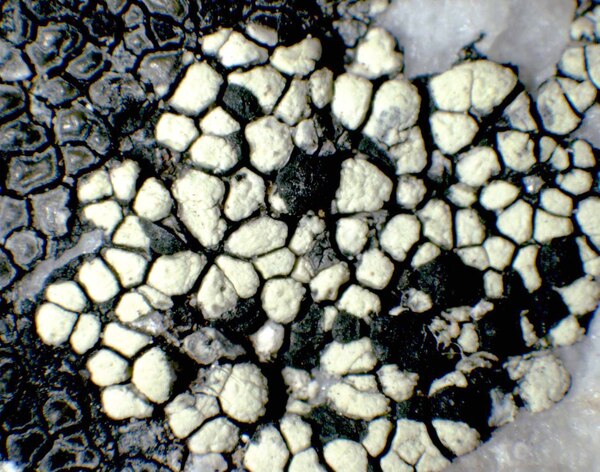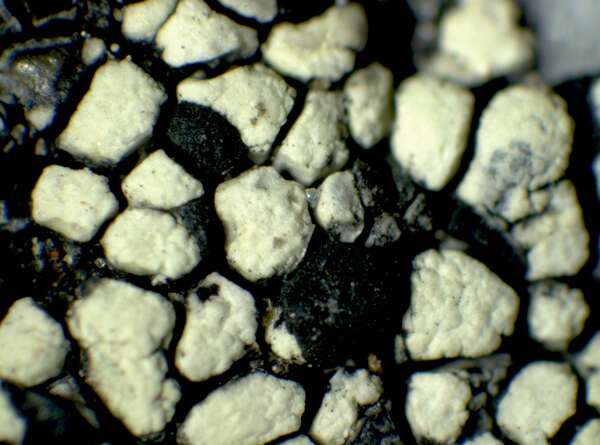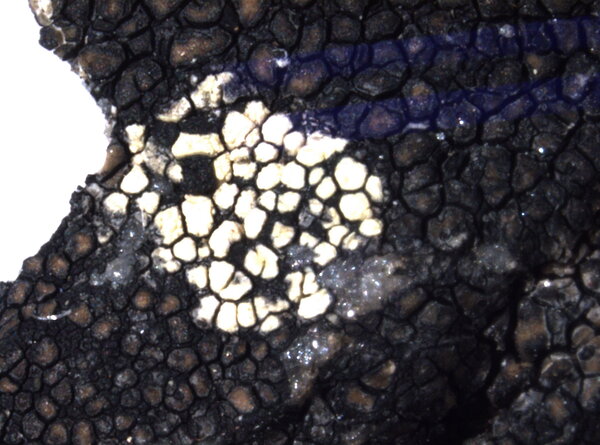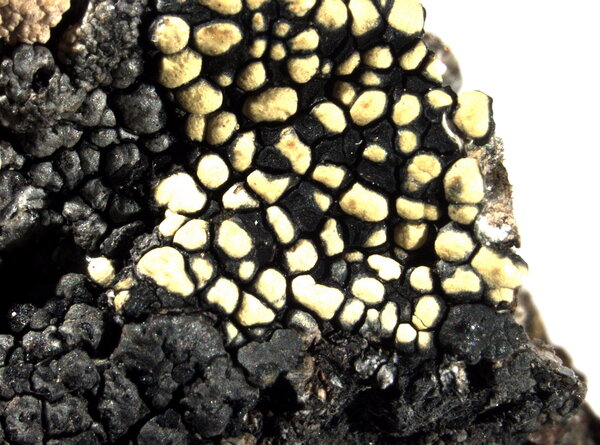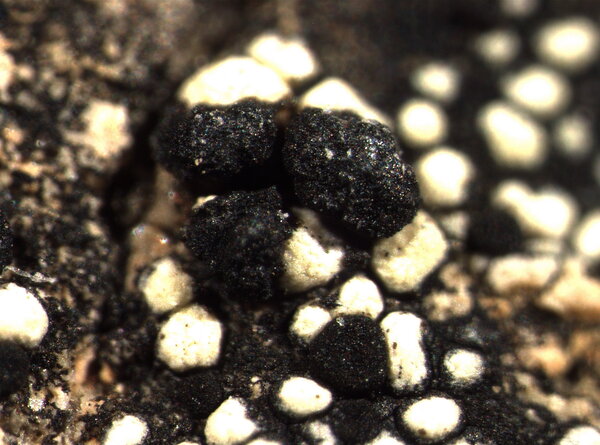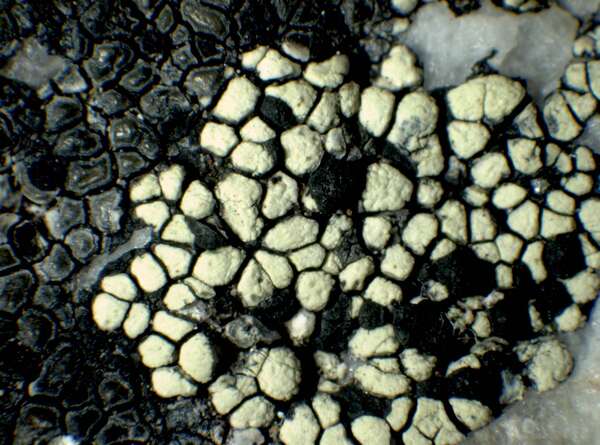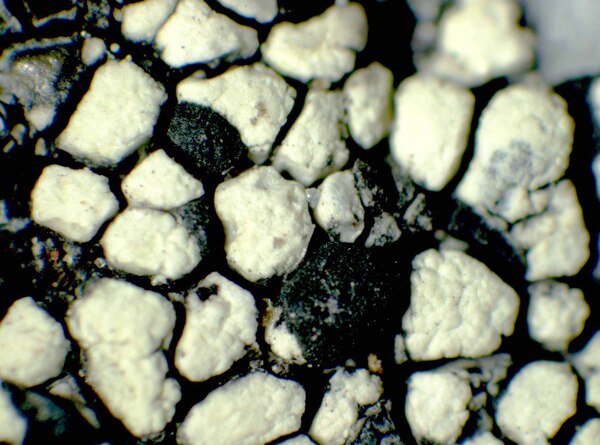Rhizocarpon pusillum Runemark
Opera Bot., 2: 63, 1956.
Synonyms:
Distribution: N - Frl (Tretiach & Hafellner 2000), TAA, Lomb, Piem.
Description: Thallus crustose, areolate, bright yellow-green, forming 0.3-1 cm wide patches within the thallus of Sporastatia-species, without a clear prothallus, the areoles developing from those of the host, round to angular, contiguous, the peripheral ones not elongate, slightly to strongly convex, 0.2-0.6 mm wide, smooth, sometimes slightly farinose. Cortex poorly differentiated, 40-75 µm thick; medulla white, I-. Apothecia lecideine, black, round or angular, 0.3-0.7 mm across, with a flat to convex, epruinose disc and a soon excluded proper margin. Proper exciple reddish brown in outer part, paler within, K+ purple-red; epithecium reddish brown, inspersed with black granules, K+ purple-red; hymenium colourless, 60-100 µm high; paraphysoids coherent, branched and anastomosing, the apical cells capitate; hypothecium brown, K-. Asci 8-spored, clavate, fissitunicate, with a well-developed tholus that is K/I- in lower part and K/I+ blue near the apex, lacking an ocular chamber, Rhizocarpon-type. Ascospores 1-septate, at first hyaline or pale green-brown, soon becoming dark green to brown, ellipsoid, 9-15(-18) x (4-)6-7(-8) µm, halonate. Photobiont chlorococcoid. Spot tests: medulla K-, C-, KC-, P+ yellow. Chemistry: cortex with rhizocarpic acid, medulla with psoromic acid. Note: an arctic-alpine, circumpolar lichen related to Rh. effiguratum, found on exposed surfaces of hard siliceous rocks, starting the life-cycle on species of Sporastatia; probably restricted to the Alps, where it reaches the nival belt.
Growth form: Crustose
Substrata: rocks
Photobiont: green algae other than Trentepohlia
Reproductive strategy: mainly sexual
In underhangs rarely wetted by rain
paras Sporastatia spp.
Commonnes-rarity: (info)
Alpine belt: rather rare
Subalpine belt: very rare
Oromediterranean belt: absent
Montane belt: absent
Submediterranean belt: absent
Padanian area: absent
Humid submediterranean belt: absent
Humid mediterranean belt: absent
Dry mediterranean belt: absent
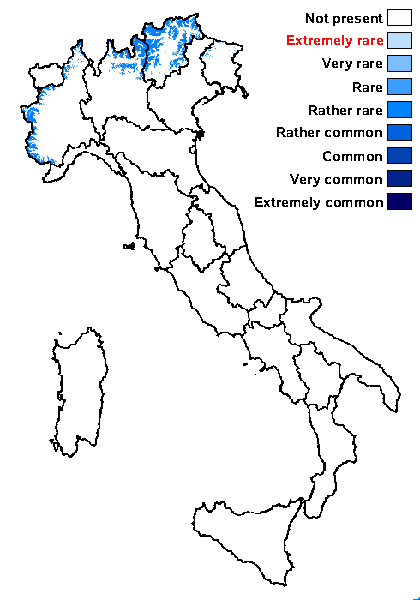
Predictive model
Herbarium samples
Growth form: Crustose
Substrata: rocks
Photobiont: green algae other than Trentepohlia
Reproductive strategy: mainly sexual
In underhangs rarely wetted by rain
paras Sporastatia spp.
Commonnes-rarity: (info)
Alpine belt: rather rare
Subalpine belt: very rare
Oromediterranean belt: absent
Montane belt: absent
Submediterranean belt: absent
Padanian area: absent
Humid submediterranean belt: absent
Humid mediterranean belt: absent
Dry mediterranean belt: absent

Predictive model
| Herbarium samples |
 INDEX FUNGORUM
INDEX FUNGORUM
 GBIF
GBIF
 DOLICHENS
DOLICHENS
